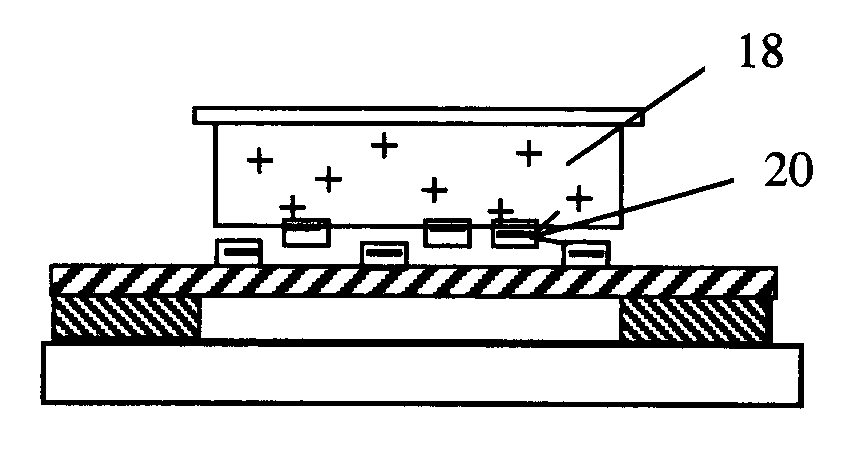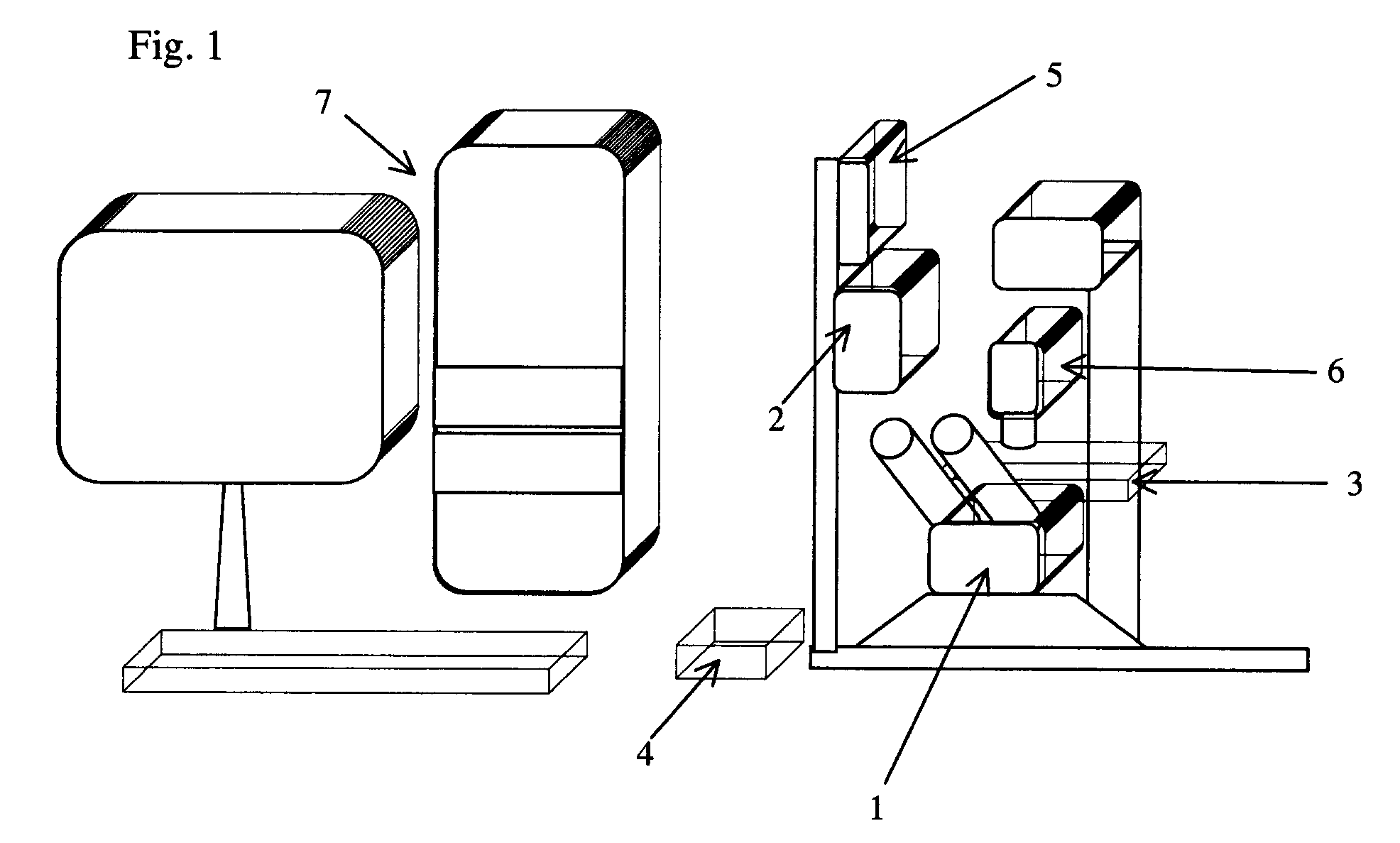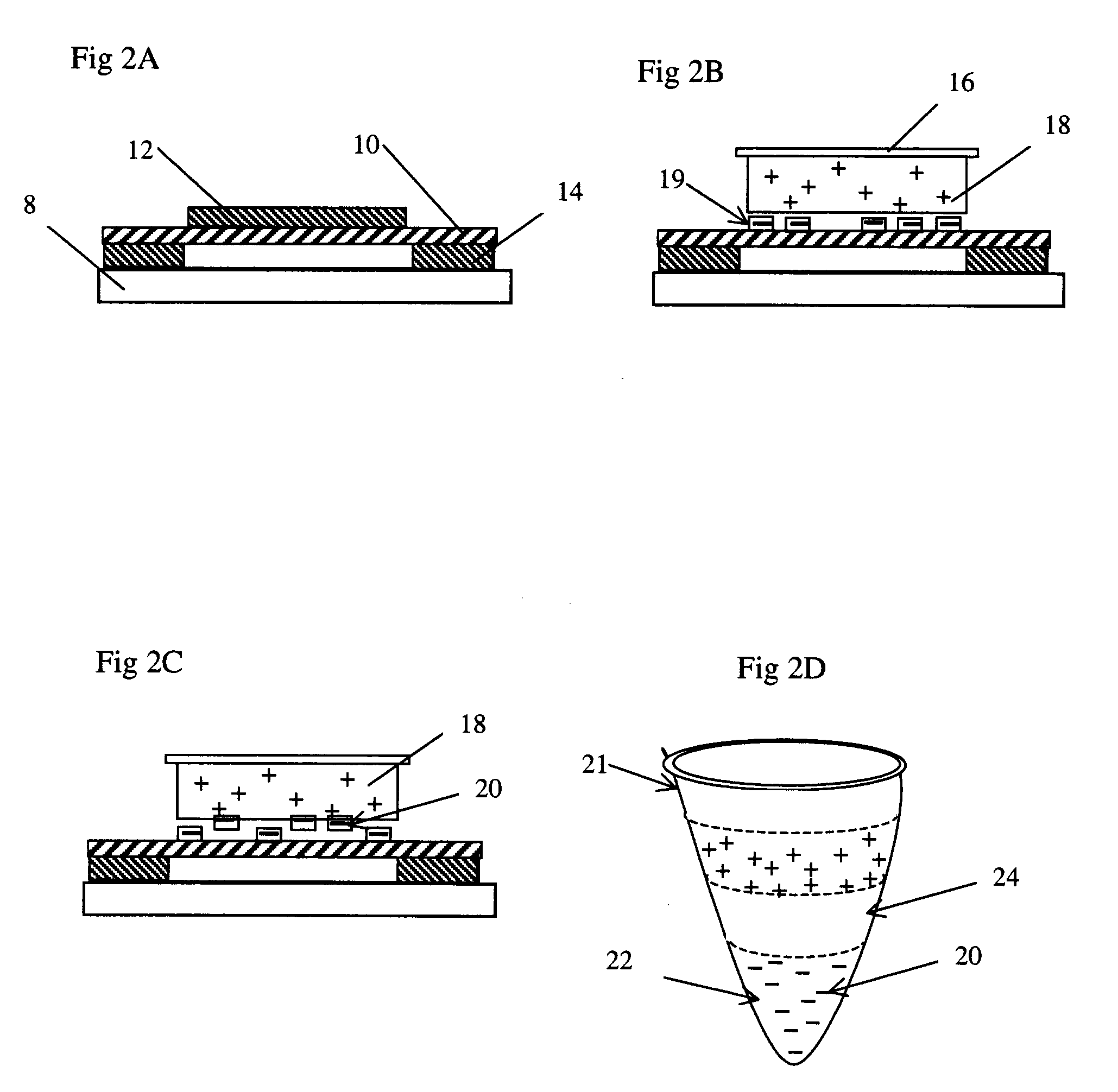Method and system for collecting cells following laser microdissection
a laser microdissection and laser microdissection technology, applied in the field of laser microdissection methods and systems, can solve the problems of high time consumption, low efficiency and precision, and high difficulty
- Summary
- Abstract
- Description
- Claims
- Application Information
AI Technical Summary
Benefits of technology
Problems solved by technology
Method used
Image
Examples
example 1
[0046]In this example, a special inverted 20× fluorite objective in microscope 1 can be used for laser microdissection. This objective has a high transmission of a 337 nm ultraviolet laser beam. The researcher can use about 61 percent of the total laser power to cut freshly-prepared frozen tissue sections and an approximately six um wide cut line may be achieved.
[0047]For the purpose of downstream DNA analysis of tumor cells, eight urn thick frozen tissue sections derived for hepatic carcinoma are prepared in the pathological lab following the standard treatment and mounted on the polyimide film 10 on the regular one mm thick glass slides 8.
[0048]Frozen sections 12 are fixed in 70 percent ethanol for 15 seconds, dipped in water, stained by a conventional method (e.g. hematoxylin), and dipped into 50 percent, 70 percent and 100 percent ethanol, sequentially. The sections 12 are exposed to air to dry for five minutes. The slides can now be used at once (even if they are somewhat wet) ...
example 2
[0051]In this example, a special 100× oil immersion objective can be used on microscope 1 to isolate and collect several cell groups of interest, even single cell. The collected cells can be extracted and subsequentially subjected to the downstream RNA analysis of tumor cells.
[0052]As described as the Example 1, approximately eight um thick frozen sections derived from breast carcinoma tissue are prepared onto the polyimide film 10 on a 0.17 mm thin coverslip instead of a 1.0 mm glass slide, which is special to match 100× oil immersion objective. Frozen sections 12 are treated as described as Example 1.
[0053]Before microdissection, frozen sections 12 are disposed upright on the motorized stage 3 in the present laser microdissection system. A small amount of immersion oil, such as anisol, is added on the lens surface of the 100× oil immersion objective, and the 100× objective is elevated toward the back of the glass coverslip as closely as possible. After observing and outlining all ...
PUM
| Property | Measurement | Unit |
|---|---|---|
| thick | aaaaa | aaaaa |
| thickness | aaaaa | aaaaa |
| gap distance | aaaaa | aaaaa |
Abstract
Description
Claims
Application Information
 Login to View More
Login to View More - R&D
- Intellectual Property
- Life Sciences
- Materials
- Tech Scout
- Unparalleled Data Quality
- Higher Quality Content
- 60% Fewer Hallucinations
Browse by: Latest US Patents, China's latest patents, Technical Efficacy Thesaurus, Application Domain, Technology Topic, Popular Technical Reports.
© 2025 PatSnap. All rights reserved.Legal|Privacy policy|Modern Slavery Act Transparency Statement|Sitemap|About US| Contact US: help@patsnap.com



